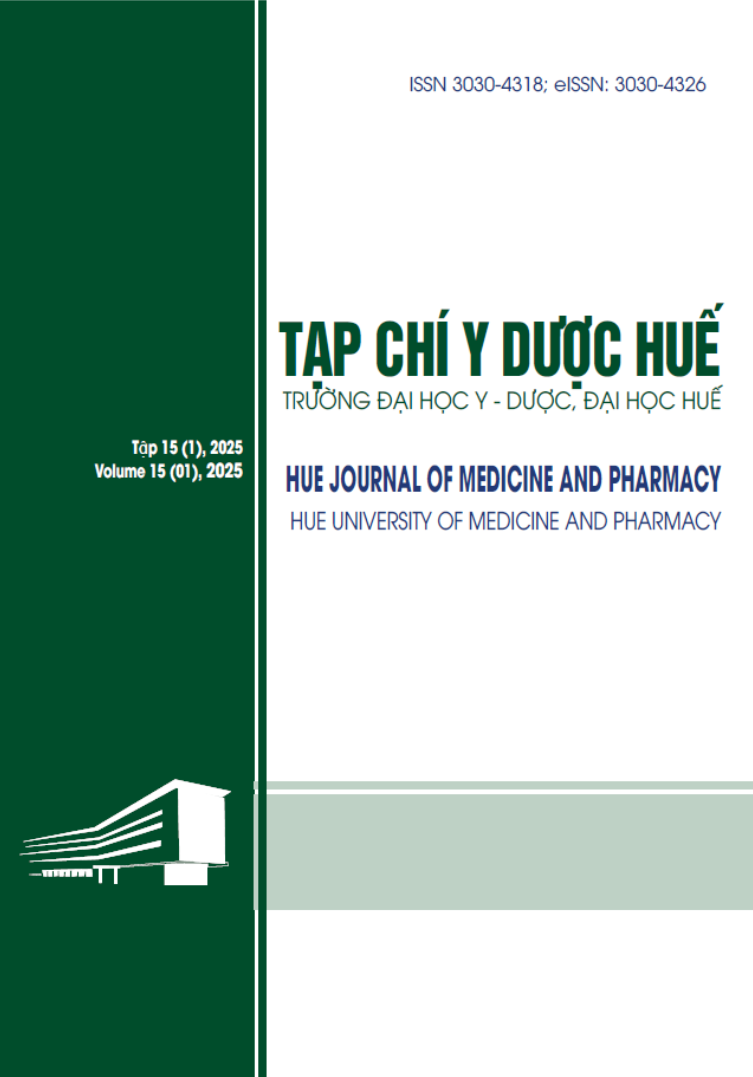Tóm tắt
Background: Composite materials are widely used in aesthetic dental restorations due to their advantages, including minimal invasive preparation, high mechanical strength, adhesive durability, biocompatibility, time and cost-effectiveness. In composite layering techniques, material thickness significantly impacts the aesthetic outcome.
Objectives: This study investigates the effect of enamel-shade composite thickness on the final color values of restorations using a two-layer technique to replace enamel and dentine.
Materials and Method: Forty-five A2 enamel-shade composite discs were created from three composite groups: DenFil (Vericom Corp.), Harmonize (Kerr), and Beautifil II (Shofu Inc.) with five thicknesses: 0.3, 0.5, 1.0, 1.5, and 2.0 mm. Parameters measured included translucency, chroma, value, and color difference. Samples were photographed against black-white backgrounds and a 3.0 mm thick OA3 dentine-shade composite background. Color parameters (L, a, b) were collected using image analysis software to assess translucency, chroma, value, and color difference.
Results: Translucency and chroma were inversely proportional to thickness for the three composite groups. With value, in the DenFil group, increased thickness decreased value, while no statistically significant correlation was found in the other two groups. When comparing the restoration color with the same enamel-shade composite thickness, no significant differences were found between Harmonize and Beautifil II, but DenFil significantly differed.
Conclusion: In the two-layer technique for replacing enamel and dentine, enamel-shade composite thickness affects restoration color characteristics, varying among composite materials.
| Đã xuất bản | 09-05-2025 | |
| Toàn văn |
|
|
| Ngôn ngữ |
|
|
| Số tạp chí | Tập 15 Số 2 (2025) | |
| Phân mục | Nghiên cứu | |
| DOI | 10.34071/jmp.2025.2.13 | |
| Từ khóa | spondyloarthritis, osteoporosis, bone mineral density, osteopenia, Vietnam |

công trình này được cấp phép theo Creative Commons Attribution-phi thương mại-NoDerivatives 4.0 License International .
Bản quyền (c) 2025 Tạp chí Y Dược Huế
Siba P Raychaudhuri, Siba P Raychaudhuri. The classification and diagnostic criteria of ankylosing spondylitis. Journal of Autoimmunity. 2014;48-49:128-33.
Tümay Sözen, Lale Özışık, NÇ B. An overview and management of osteoporosis. European Journal of Rheumatology. 2016;4(1).
Rusman T, van der Weijden MAC, Nurmohamed MT, et al. Low bone mineral density is related to male gender and decreased functional capacity in early spondylarthropathies. Arthritis Rheumatol. 2010;73(12).
Uwe Lange, A. Kluge, J. Strunk, J. Teichmann, al e. Ankylosing spondylitis and bone mineral density—what is the ideal tool for measurement? Rheumatology International. 2005;26.
M Rudwaleit, D van der Heijde, R Landewé, et al. The development of Assessment of SpondyloArthritis international Society classification criteria for axial spondyloarthritis (part II): validation and final selection. Annals of The Rheumatic Diseases. 2009;68(6):777-83.
Gavin Clunie, Nicole Horwood. Loss and gain of bone in spondyloarthritis: what drives these opposing clinical features? Therapeutic Advances in Musculoskeletal Disease. 2020;12:1-17.
AB Mullaji, SS Upadhyay, EK Ho. Bone mineral density in ankylosing spondylitis. DEXA comparison of control subjects with mild and advanced cases. The Journal of Bone & Joint Surgery British. 1994;76(4):660-5.
Toussirot E, Michel F, Wendling D. Bone density, ultrasound measurements and body composition in early ankylosing spondylitis. Rheumatology. 2001;40(8).
Đào Xuân Thành. Nhận xét một số yếu tố nguy cơ ảnh hưởng đến mật độ xương ở bệnh nhân viêm cột sống dính khớp. Vietnam medical journal. 2017;454:188-92.
Mai Thị Minh Tâm. Nghiên cứu mật độ xương và một số yếu tố liên quan ở bệnh nhân viêm cột sống dính khớp. Ha noi capital: Hanoi medical university; 2008.
L. Malterre, T. Schaeverbeke, L. Lequen, et al. Densité minérale et métabolisme osseux des spondylarthropathies. La Revue de Médecine Interne. 2005;26(5):381-5.
Phùng Đức Tâm. Khảo sát chỉ số Z-score của mật độ xương ở bệnh nhân nam viêm cột sống dính khớp. Ha Noi, Vietnam: Hanoi Medical University; 2016.






